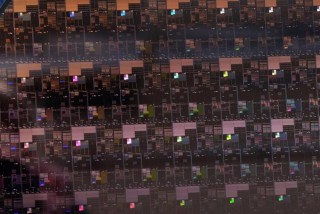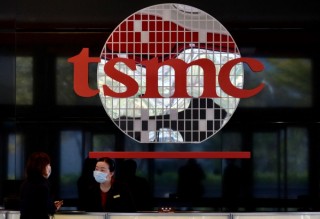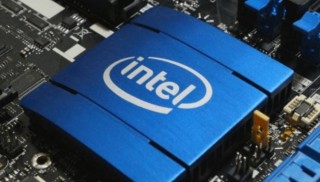Loading
Search
▼ US, Japan Reaching For A 2-Nm Chip Breakthrough
- Category:Other
Reports say two sides jointly aim to make leading-edge 2-nm chips by 2025 in state-led bid to hedge their mutual exposure to TSMC
A top-level meeting has confirmed earlier reports that the US and Japan will work together to develop leading-edge 2-nanometer (nm) semiconductor process technology to prevent overreliance on Taiwan Semiconductor Manufacturing Company’s (TSMC) factories in Taiwan.
On July 29, US Secretary of State Antony Blinken and Secretary of Commerce Gina Raimondo met with Japan’s Minister for Foreign Affairs Yoshimasa Hayashi and Minister of Economy, Trade and Industry Koichi Hagiuda in Washington, DC. It was the first meeting of the newly established US-Japan Economic Policy Consultative Committee.
A joint statement issued after the meeting said the two sides “seek to advance efforts under the Japan-US Commercial and Industrial Partnership and other frameworks to foster supply chain resilience in strategic sectors, including, in particular, semiconductors…”
They also “Welcome the progress of the Joint Task Force announced by President Biden and Prime Minister Kishida to explore the development of next generation semiconductors…”
The joint statement is short on detail, but according to reports in the Japanese press, a new R&D organization with significant US participation will be established in Japan by the end of this year to develop and prove the 2-nm technology with a goal of starting production by 2025.
TSMC also aims to start 2-nm production in 2025 but has already started building a factory. The US and Japan are playing catch-up, likely driven in part by fear of a Chinese take-over of Taiwan. IBM announced a 2-nm design in May 2021 but it is not ready for mass production.
The US and Japanese are three or more generations behind TSMC. Only Samsung competes with TSMC at 3-nm and 5-nm, the previous two technology nodes. Apple, Qualcomm, Nvidia, Broadcom, AMD and Intel all rely on TSMC to make their most advanced products.
On the other hand, Intel has its own ambitious technology roadmap and progress toward smaller design rules at TSMC – as well as Intel, Samsung and other semiconductor makers – would not be possible without American, Japanese and European equipment and materials.
The American and Japanese governments are not simply providing support for what market competition would deliver anyway. On the contrary, they and industry executives now agree that the development of leading-edge semiconductor production technology must be accelerated and not derailed by corporate inertia or opposition to large manufacturing investments from the financial sector.
It all sounds new, but in fact, the American government is now joining a process that has been making news for a year and a half now, with TSMC itself playing an important role.
In March 2021, TSMC established an R&D center in Japan’s science city of Tsukuba to develop 3D IC packaging materials in cooperation with its Japanese suppliers.
Two months later, Japan’s Ministry of Economy, Trade and Industry (METI) and its subsidiary organization, the National Institute of Advanced Industrial Science and Technology (AIST), announced that more than 20 Japanese companies would take part.
In June of this year, TSMC completed construction of a clean room in the AIST Tsukuba Center. According to the press release:
“The TSMC Japan 3DIC R&D Center, with its brand-new clean room facility, will pursue research into the next generations of three-dimensional silicon stacking and advanced packaging technologies in materials science.
The American and Japanese governments are not simply providing support for what market competition would deliver anyway. On the contrary, they and industry executives now agree that the development of leading-edge semiconductor production technology must be accelerated and not derailed by corporate inertia or opposition to large manufacturing investments from the financial sector.
It all sounds new, but in fact, the American government is now joining a process that has been making news for a year and a half now, with TSMC itself playing an important role.
In March 2021, TSMC established an R&D center in Japan’s science city of Tsukuba to develop 3D IC packaging materials in cooperation with its Japanese suppliers.
Two months later, Japan’s Ministry of Economy, Trade and Industry (METI) and its subsidiary organization, the National Institute of Advanced Industrial Science and Technology (AIST), announced that more than 20 Japanese companies would take part.
In June of this year, TSMC completed construction of a clean room in the AIST Tsukuba Center. According to the press release:
“The TSMC Japan 3DIC R&D Center, with its brand-new clean room facility, will pursue research into the next generations of three-dimensional silicon stacking and advanced packaging technologies in materials science.
These technologies will enable system-level innovations to increase computing performance and integrate more functionality, opening a new path for driving semiconductor technology forward in addition to the industry’s conventional path of shrinking transistor size.”
“With the completion of the clean room, the TSMC Japan 3DIC R&D Center will support research and development of state-of-the-art 3D IC packaging material in collaboration with Japanese partners, domestic research institutes and universities possessing strengths in semiconductor materials and equipment.”
In the semiconductor industry, a clean room is a closed and precisely controlled space where dust and other potential contaminants are filtered out and workers wear head-to-foot “bunny suits” to isolate themselves from the manufacturing process.
In November 2021, private companies took the initiative when Japan’s JSR Corporation announced that it had completed the acquisition of America’s Inpria Corporation.
JSR is the world’s top maker of polymer-based photoresists, the light-sensitive materials used to form circuit patterns on silicon and other types of semiconductor wafers during the photo-lithographic process of chip production.
Inpria specializes in metal-oxide photoresists developed specifically for extreme ultraviolet (EUV) lithography, which enables the production of leading-edge semiconductor products with 5-nanometer and smaller design rules. Both companies work closely with Intel.
Inpria’s metal-oxide photoresists are also expected to meet the technical challenges beyond 1-nm toward the end of the decade. 2-nm is a step along the way but not a final destination.
The US government’s efforts are now coming together. A statement issued by the White House on the occasion of Biden’s visit to Tokyo in May this year noted that the two leaders “…concurred on establishing a joint task force to explore the development of next generation semiconductors, based on ‘the Basic Principles on Semiconductor Cooperation’ adopted in the Japan-US Commercial and Industrial Partnership (JUCIP).”
“With the completion of the clean room, the TSMC Japan 3DIC R&D Center will support research and development of state-of-the-art 3D IC packaging material in collaboration with Japanese partners, domestic research institutes and universities possessing strengths in semiconductor materials and equipment.”
In the semiconductor industry, a clean room is a closed and precisely controlled space where dust and other potential contaminants are filtered out and workers wear head-to-foot “bunny suits” to isolate themselves from the manufacturing process.
In November 2021, private companies took the initiative when Japan’s JSR Corporation announced that it had completed the acquisition of America’s Inpria Corporation.
JSR is the world’s top maker of polymer-based photoresists, the light-sensitive materials used to form circuit patterns on silicon and other types of semiconductor wafers during the photo-lithographic process of chip production.
Inpria specializes in metal-oxide photoresists developed specifically for extreme ultraviolet (EUV) lithography, which enables the production of leading-edge semiconductor products with 5-nanometer and smaller design rules. Both companies work closely with Intel.
Inpria’s metal-oxide photoresists are also expected to meet the technical challenges beyond 1-nm toward the end of the decade. 2-nm is a step along the way but not a final destination.
The US government’s efforts are now coming together. A statement issued by the White House on the occasion of Biden’s visit to Tokyo in May this year noted that the two leaders “…concurred on establishing a joint task force to explore the development of next generation semiconductors, based on ‘the Basic Principles on Semiconductor Cooperation’ adopted in the Japan-US Commercial and Industrial Partnership (JUCIP).”
JUCIP was established on November 15, 2021, by Raimondo and Hagiuda. On May 4, 2022, they announced that the new organization had succeeded in:
“Joint development of Basic Principles on Semiconductor Cooperation, which identify a shared vision, objective and strategy for strengthening the resiliency of semiconductor supply chains.
Under the Basic Principles, DOC [Department of Commerce] and METI intend to cooperate on diversifying semiconductor production capacity, increasing transparency, coordinating emergency response on shortages, and strengthening semiconductor R&D and workforce development.”
It remains to be seen what role American and Japanese semiconductor manufacturing companies will play in the new partnership.
Will they simply buy the technology and upgrade their own production facilities? Or will they establish one or more new companies along the lines of TSMC’s joint venture with Sony and Denso on the island of Kyushu?
Given Japan’s lack of foundry capacity, that is a distinct possibility.
“Joint development of Basic Principles on Semiconductor Cooperation, which identify a shared vision, objective and strategy for strengthening the resiliency of semiconductor supply chains.
Under the Basic Principles, DOC [Department of Commerce] and METI intend to cooperate on diversifying semiconductor production capacity, increasing transparency, coordinating emergency response on shortages, and strengthening semiconductor R&D and workforce development.”
It remains to be seen what role American and Japanese semiconductor manufacturing companies will play in the new partnership.
Will they simply buy the technology and upgrade their own production facilities? Or will they establish one or more new companies along the lines of TSMC’s joint venture with Sony and Denso on the island of Kyushu?
Given Japan’s lack of foundry capacity, that is a distinct possibility.
- August 3, 2022
- Comment (0)
- Trackback(0)




